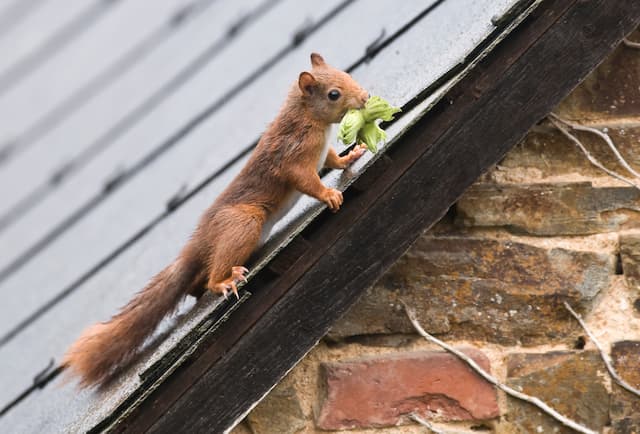Squirrels have proven to be resourceful and persistent when seeking refuge in the complex interplay between nature and human habitation. As the seasons change and the weather fluctuates, the attics, crawl spaces, and cozy crannies of our homes become more enticing to these agile creatures. Understanding the most common squirrel entry points and employing effective prevention strategies are crucial for preserving the sanctity of our living spaces while respecting the local wildlife.
Roof edges and eaves serve as a welcome mat for squirrel explorers.
Roof edges and eaves provide access to prospective squirrel habitats. Gaps, damaged sections, or compromised roofing materials can present these agile climbers with an irresistible opportunity to enter your home. Pruning tree branches that extend too close to your roofline can act as a natural deterrent by denying squirrels an accessible bridge. It is essential to inspect and maintain roofing materials on a regular basis to keep these areas squirrel-free.
Vents and Chimneys: Inviting Escapes
Vents and chimneys, which are essential for ventilation and heating, can inadvertently invite rodents into our dwellings. Potential entry sites include roof vents, gable vents, and ventilation pipes. The installation of mesh covers over these apertures maintains functionality while preventing squirrel entry. Choose durable materials, such as stainless steel mesh, which can withstand the persistent chewing of squirrels.
Soffits and Fascia Boards: The Hidden Weaknesses
Often overlooked in grand architectural ensembles, soffits and fascia boards can become vulnerable sites of entry. Squirrels are adept at exploiting spaces between these structural elements and your home’s primary body. Regular inspection and reinforcement with resilient materials, such as metal flashing or resilient wood, create an effective barrier against squirrel entry.
Attic Dormers and Gables: Architectural Elements and Squirrel Entrances
In addition to enhancing the visual appeal of your home, charming attic dormers and gables may also function as potential squirrel entryways. These architectural elements may contain access points exploited by rodents. It is essential to constantly monitor the condition of these areas. Using dependable materials, timely reinforcement and repair can prevent squirrel intrusion and preserve the structural integrity of these architectural embellishments.
Utility Lines and Cables: Nature’s Highway to Your Residence
Inadvertently, the utility lines and cables that traverse our urban landscapes provide squirrels with elevated highways to prospective shelter. These lines serve as conduits for these adept climbers to reach rooftops. Pruning trees vigilantly around utility lines and installing specialized squirrel barriers on poles and lines prevents squirrels from gaining access to these areas.
A Unified Defence: Squirrel Exclusion Preventive Strategies
- Preventing the entry of squirrels requires a combination of vigilance and action:
- Routine Inspections: Conduct regular vulnerability assessments of the exterior of your home, noting potential entry points and evidence of wear.
- Seal the Gaps: Immediately address gaps, openings, and vulnerable spots with durable materials, forming a strong barrier against squirrel invasion.
- Landscaping Sense: Trim overhanging tree branches and shrubbery to reduce squirrel access points to the roof of your home.
- Mesh Barriers: Install mesh covers on vents, chimneys, and other openings to prevent rodents from entering while maintaining functionality.
- Professional Guidance: Seeking the advice of wildlife specialists can provide customized insight into squirrel behaviour and effective prevention techniques.
In conclusion, a peaceful coexistence between humans and rodents requires proactive home protection measures. By recognizing and addressing the most common squirrel entry points, we not only safeguard our living spaces but also contribute to the conservation of these dynamic creatures’ natural habitats. Through a unified approach to prevention, we can fortify our homes and nurture a shared urban environment in which both humans and squirrels can flourish.
At Wildlife Removal Oshawa, we practice humane squirrel removal. Our professionals will remove the squirrels from your property and release them back to their natural habitat safely.
